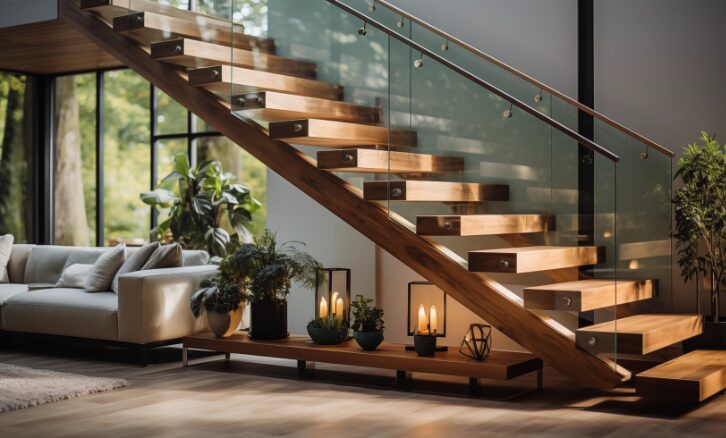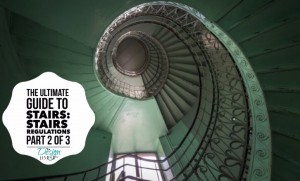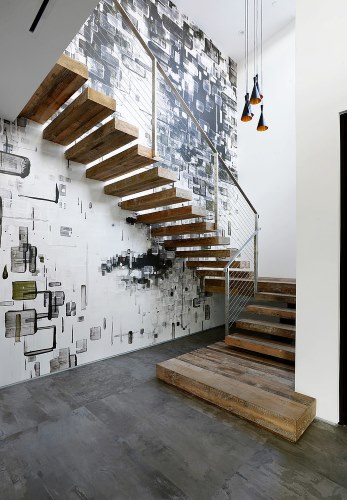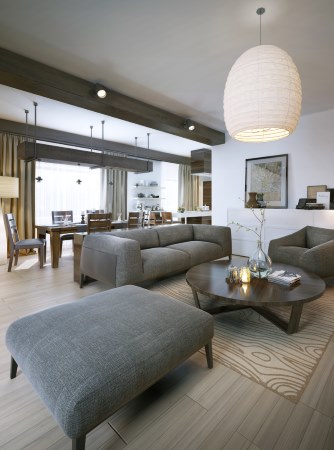
The Ultimate Guide To Stairs: Stairs Material Part 3 of 3
The Ultimate Guide To Stairs : Stairs Material
Stairs are not only an essential circulation element they also are a dominant design feature. Because you can’t update or change your stairs as often as a kitchen, the material selection of stairs is a very important decision. To make that decision easier, compiled is a list of the pro’s and con’s of the main stair materials. Read through the pros and cons of Wood, Glass and Acrylic, Metal and Concrete.
WOOD
Wood is the most traditional staircase material and the most affordable. Wood is strong and easy to work with and provides an element of warmth in the home. The cheapest option is engineered pine or plywood, which can be sealed, painted or carpeted. Hardwoods (such as ash and oak) are more expensive.
Pros
- Most affordable staircase material
- Strong and easy to work with
Cons
- Wood is less durable than other staircase materials and will require maintenance from time to time.
- Wood can also be damaged by high humidity.
GLASS AND ACRYLIC
Acrylic and glass staircases add a touch of contemporary glamour to an interior. The advantage of glass and acrylic staircases is that they are lightweight and allow open views and filtered light through the levels in a house. However, glass and acrylic staircases are one of the more expensive material options.
Pro’s
- Glass and acrylic stairs are strong and are able to be strengthened to accommodate heavy traffic
- Allows for views and light to filter through the staircase
- A wide range of non-stick coatings area available
Con’s
- Acrylic surfaces scratch
- An expensive option
METAL
While metal stairs usually cost more than wooden varieties, their strength and durability makes them an excellent material option. Metal also offers a flexibility of design and can be used in a variety of styles ranging from heavy industrial looks to lightweight, elegant designs (for some stair inspiration, check out homedit’s 25 most creative staircase designs). Metal stairs range in prices depending on the complexity of the design but in some areas, metal stair components can be purchased off-the-shelf. Industrial safety grates could also be used as a cheaper alternative.
Pro’s
- Durable, strong and able to be used in a variety of settings
- Can be more light-weight in appearance than concrete and timber
- Perfect for spiral stairs and for tight spaces
Con’s
- Metal stairs can be noisy when traversed
- Bronze and iron staircases may change colour in time but can be coated with patina to preserve their appearance
- Susceptible to corrosion in high-salt areas
- Heavy to transport and thus a more expensive option
You might also like
Part 1 – Stairs Design
Part 2 – Stairs Regulations
CONCRETE
Concrete stairs can provide a sense of solidity and a strong, contemporary look. Concrete stairs are usually supplied precast in sections and ready to be assembled on site. The cost of concrete staircases varies considerably based on the complexity of the design, the specialized manufacturing required and the installation costs.
Pro’s
- Strong and solid
- Concrete is able to be poured into a variety of creative shapes
Con’s
- Concrete has a tendency to crack so frame support must be well engineered
- Concrete may suffer from chipping on the tread edges and making repairs is difficult
- There may be a time delay while waiting for concrete stairs to be fabricated and delivered to site
Stair Material – Wood, Glass and Acrylic, Metal and Concrete the Pros and Cons



